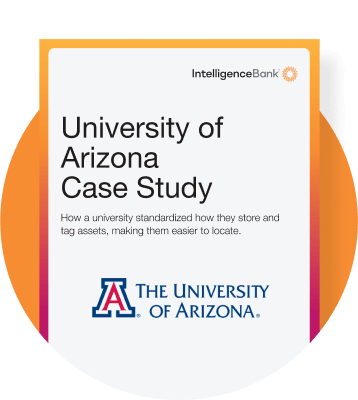Disclaimers and disclosures are critical in financial marketing. In addition to being explainers, they help avoid fines, lawsuits, and suspensions. So it makes sense that they are a priority for our Financial Services clients with over 90% expressing concern about them. Driving this concern is the ramped up scrutiny applied by regulatory bodies. For instance, FINRA reviewed over 65,000 advertisements and sales communications in 2021, while the FCA blocked more than 8,500 adverts in 2022 alone. And in 2023, WealthPress was ordered to refund over $1 million to consumers for making false and misleading claims. These examples illustrate how crucial it is for financial marketers to get their disclaimers right.
There are stringent regulations around the marketing of financial products, and financial marketers must navigate a complex web of required disclaimers. These can vary greatly depending on local regulatory bodies like the FCA in the UK, FINRA in the US, and the ACCC in Australia. What’s more, financial disclaimers and disclosures must evolve with changing regulations, meaning it’s crucial that marketers stay up to date.
Ensuring that your marketing materials contain the correct language is a challenge, especially when this information isn’t clearly documented or communicated across departments. It’s critical to ensure marketing compliance rules are kept up to date and socialized with your Marketing, Legal, and Compliance teams to avoid any potential issues. We’ve compiled some of the most common types of disclaimers and disclosures required in financial marketing. While there are deeper layers of complexity, this provides a top line.

Common Financial Disclaimers and Disclosures
- General Past Performance
The general past performance disclaimer informs investors that past performance is not necessarily indicative of future results. Without this financial disclaimer, marketers might unintentionally imply that previous returns will continue, which could be misleading.
- Simulated Past Performance
This disclaimer addresses how a firm would have performed under hypothetical conditions. For example, if a company details simulated performance, it must clearly state that these figures are not a reflection of actual results. Regulatory bodies like the FCA require this disclaimer to prevent confusion about the reliability of simulated performance data as an indicator of future outcomes.
- Investment Risk
Investment carries risk, and a financial disclaimer about this risk must be made clear to potential investors. This disclaimer informs them that they could lose money, and it often includes the extent of that potential loss. Financial marketers should also consider offering alternative, lower-risk investment options in their communication, so investors know that they have choices beyond high-risk options.
- Comparison Rate
The comparison rate disclaimer provides clarity when comparing your financial products with competitors. It explains that fees, rates, and features may differ over time and across different financial products. The goal of this financial disclaimer is to ensure transparency in your comparisons, so customers fully understand the basis of any claims being made.
- Performance & Returns
A performance and returns disclaimer is essential to emphasize that any positive performance or returns featured in marketing content are not guaranteed. Without this disclaimer, there is a risk of misleading investors into believing that they can expect consistent returns, regardless of market fluctuations.
- Forecast
A forecast disclaimer clarifies that any future performance indicators or financial forecasts presented in marketing content are based on current data, but you are not responsible for updating the forecast to reflect policy or market changes.
- General Advice Warning
The general advice warning informs potential investors that the advice presented in your content does not consider their specific financial needs, objectives, or circumstances. It typically recommends seeking independent financial advice before making any investment decisions.
- General Financial Disclaimer
A general financial disclaimer outlines that the financial information provided is for informational purposes only and does not constitute financial advice. It encourages users to seek professional guidance before taking any financial actions based on the content of your website.
- Confidential Material
A confidential material disclaimer specifies that the content is intended for the named recipient only and should not be shared. This disclaimer protects against unauthorized distribution of sensitive or proprietary information. - Partnership
The partnership disclaimer clarifies that the communications do not constitute a formal partnership between the parties involved. It ensures that recipients do not mistakenly assume a business relationship exists where there is none.
- Logos & Brand
This disclaimer emphasizes that any logos or brand names used in your marketing are the property of their respective owners and are shown for identification purposes only. It makes it clear that your use of these logos does not imply endorsement.
- Copyright
A copyright disclaimer is used to assert your ownership of intellectual property on your website, such as content, designs, and logos. It helps prevent unauthorized use or replication of your materials by third parties.
Financial Disclaimer Updates: Navigating Changing Regulations
Financial disclaimers and disclosures are not static; they evolve as regulations change. So, how do financial marketers keep up? Staying compliant is easier with tools like IntelligenceBank. We offer several ways to help financial marketers ensure they have the correct disclaimers and reduce manual review processes with their compliance teams.
IntelligenceBank’s AI-powered platform helps you populate disclaimers faster, and identify non-compliant fine print as well as headlines. Here’s a quick look at how it works:
Disclaimer Engines
This tool allows you to deliver content faster by automatically generating legally approved disclaimers based on answers to questions about an asset or campaign. This means there is no need for additional manual Legal review for every creative asset because they have already approved disclaimer rules at the start of a campaign. Assets can be produced at scale by automatically adding disclaimers to every piece of artwork in a campaign. As well as that, the Disclaimer Engine is smart enough to adapt to the regulations required for each channel. For example there’s a big difference between the length of disclaimers on a billboard and those on a brochure.
You can even create a database of approved disclaimers and then use Creative Templates to quickly add disclaimers to creative.

Document Risk Scanning
AI-powered content review scans your pre published work to instantly identify areas of brand and legal risk in marketing documents and collateral. Scans are performed against a set of rules configured to your industry. They can be either out-of-the-box rule libraries or bespoke. Errors in disclaimers, trigger words, brand guidelines and spelling are addressed quickly and in real time.

Web Risk Reports
For large corporations, manually keeping track of marketing compliance and fine print across thousands of live web pages is nearly impossible. That’s why we developed AI-powered Web Risk Reports to Identify legal and brand risks in web content faster and more accurately than any human. They guarantee word-perfect matching for disclaimers, and identify high-risk language and unsubstantiated claims with accompanying actionable feedback.

With a combination of automation and AI, financial marketers can be empowered to actively self-review and amend web content before submitting to Legal and Compliance for final approval. This frees up vital resources for more important strategic work.
If you’d like to learn more about how IntelligenceBank can streamline your compliance workflow, contact us for a demo!




